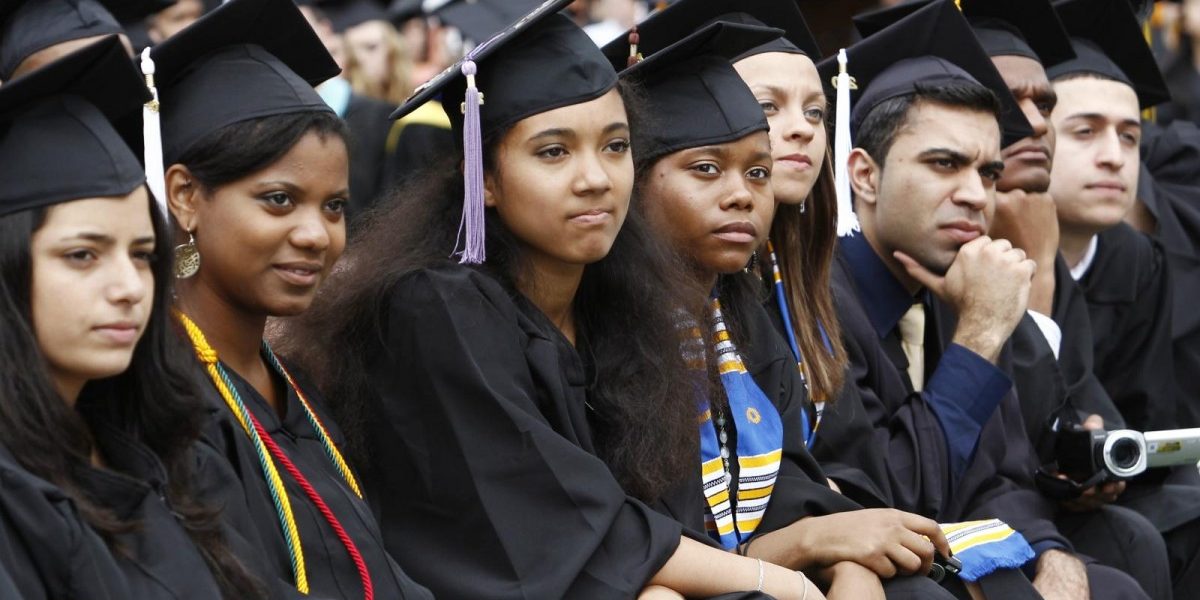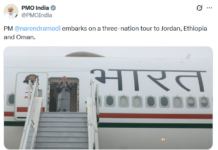Aroonim Bhuyan
India Post News Service
A US federal judge this month issued a stay order against President Donald Trump’s administration’s rule to make it easier to deport students for even innocent mistakes in following visa regulations and prevent them from returning for as long as 10 years by making subtle changes in the regulation.
Judge Loretta C. Biggs stopped the US Customs and Immigration Service (USCIS) from temporarily enforcing the rule issued last August that allowed the deportation and penalizing of students who overstayed their visa for 180 days by changing the way in which the period was calculated.
She also ordered that the case against the rule to be heard expeditiously.
Immigration expert Doug Rand told IANS news agency: “It is very positive for international students, a very large proportion of whom are Indians. It means that the policy that the USCIS issued last year is suspended for the foreseeable future, and may be forever depending on how this litigation comes out.”
Barring them from returning for three to 10 years “was a very harsh punishment and this was the Trump administration’s way of trying to crack down on what they say is visa abuse, which would just create immense uncertainty for hundreds of thousands of students, the vast majority of whom have no intention of violating the visa (conditions), and if they do violate the visa (rules) it was an innocent mistake”, Rand said.
Biggs issued the stay order May 3 at the federal court in Winston-Salem, North Carolina, on a case filed by two students of Chinese descent, the American Federation of Teachers (AFT), three colleges and the Guilford College International Club.
In January this year, scores of Indian students and eight student recruiters of Indian origin were arrested after raids conducted by the US Immigration and Customs Enforcement (ICE) agency for alleged immigration rules violations.
The ICE, under the Department of Homeland Security (DHS), conducted the raids and arrested scores of Telugu students nationwide in a crackdown on foreign students staying in the US without proper authorization.
The DHS said it set up a fake university with undercover agents as staff in Farmington Hills, Michigan, to target foreign students who were staying in the US without proper authorization, according to federal indictments unsealed in Detroit.
This triggered frantic diplomatic engagements with the Indian External Affairs Ministry saying that it was according high priority to the issue. The Indian Embassy in Washington and Consulates in other US cities contacted the State Department and the Department of Homeland Security.
Following Biggs’s order this month, the Farmington students got some respite. They may now be able to claim they have six months from the day the fraud was exposed in January to either leave the country during this period with the possibility of returning or switch to a legitimate institution. Under the rule that has been stayed the 180-day period would have expired from the day they enrolled more than a year ago in some cases.
Indian students looking forward to studying abroad are seeing the US as less of an option in the uncertain environment created by the Trump administration which sees immigrants with suspicion – people taking away jobs of native Americans. Point is: the US is a country made up of immigrants.
According to the Institute of Immigration Research in the George Mason University, foreign-born individuals who immigrated to the United States have historically represented an important shareof Nobel Prize winners.
“In 2018, nine of 12 Nobel Prize winners were affiliated with US institutions of highereducation at some point in their lives,” the institute said in a report titled “The 2018 Nobel laureates and foreign-born scholars in the US higher education system”.
“Of these nine, three are foreign-born individuals who studied andworked in the United States,” it stated.
“US institutions of higher learning have provided the world’s best scientists and researchers with the humanand physical resources and research environments necessary to reach the highest echelons of scientificdiscovery and innovation.”
Historically speaking, most of the US’ brightest scientists were immigrants from Russia and Germany. Immigrants from Italy created businesses that generated jobs for millions of native Americans. Then came the Indians who, after becoming renowned doctors and engineers, sparked the IT revolution in Silicon Valley.
Today, the three-million strong Indian American community is an important ethnic group in the US, accounting for about 1 per cent of the total population in the country. It is the third largest Asian ethnic group in the US after the Chinese and the Filipinos.
The Indian American community enjoys great reputation and significant influence on the American society and polity with its large number of professionals, business entrepreneurs and educationalists marking their positive presence on the national scene. Almost 40 per cent of all Indians in the United States have a master’s, doctorate or other professional degree, which is about five times the national average.
Stating that the Indian diaspora has been a catalyst in cementing closer ties between India and the US, a brief on the Washington Indian Embassy website states that about 1.28 million Indians reside in the US as green card holders, temporary workers and students.
However, given Trump’s policies against immigrants, this may not remain the case as far as Indian students are concerned.
India, at 18 per cent, continues to be the originating nation for the second-highest number of foreign students after China’s 33 per cent.
However, reports suggest that given the feedback from students already studying in the US as well as the improving job market in India, the growth in the number of students going to the US from India is set to fall this year.
“Lot of Indians are getting adverse feedback from people in the US who had applied in 2015-16 and are now set to graduate,” a report in the Business Standard newspaper quoted Arun Jagannathan, CEO and founder of CrackVerbal, an overseas education service provider, as saying.
“People who apply in 2019 will get in college by 2019-20 and graduate by the time new regime comes in (in 2020),” Jagannathan said.
However, he added: “Since technology and consulting sectors in the US cannot do without India, there is a hope that things will change if a new regime comes in.”
Washington should be aware. As it continues with its anti-immigrant policies, an increasing number of Indian students are opting for higher studies in Canada, Australia, Ireland and Germany because of proactive action taken by these countries to attract foreign students.
Just effective May 2019, France recognized four Indian academic qualifications – Senior School Certificate (SSC), Bachelor’s and Master’s degrees and PhDs – from government-approved institutions. Similarly, the French equivalents of these qualifications will be recognized by the Indian government.
In 2018, 8,000 Indian students chose France to pursue their higher education – mostly in the English medium – a significant increase over the previous years, the French Embassy in New Delhi said.
“The Embassy of France in India is committed to fostering this positive trend with supporting initiatives. The target set by President Emmanuel Macron to welcome 10,000 Indian students annually by 2020, will be reached by the end of this year,” it added.
The Embassy said it has developed a highly-attractive visa policy for Indian students, which includes the option of a two-year employment visa in France after the completion of post-graduate studies.
Indian students contributed $7.5 billion to the US economy in 2017-18. Though the growth in the number of Indian students to the US during this period stood at 5.4 per cent, what had caught observers’ notice was that it was at a five-year low.
Now, with Trump’s anti-immigrant policies, particularly when it comes to Indian students, it is completely obvious who stands to lose.
Just to keep things in perspective, here are a few myths on immigration to the US broken by the George W. Bush Presidential Center on its website:
- MYTH: Immigrants are taking over
- FACT: Immigrants actually only account for 13.5 per cent of the total US population, which is in line with historical norms
- MYTH: Immigrants are all Mexican
- FACT: 30 per cent of immigrants come from Asia, and currently more are coming from China than Mexico
- MYTH: Immigrants don’t work
- FACT: 72.5 per cent of immigrants believe hard work is how you succeed in America and are responsible for half of the total US labor force growth over the last decade
- MYTH: Immigrants don’t help the economy
- FACT: Immigrant-owned businesses with employees have an average of 11 employees
- MYTH: Immigrants take American jobs
- FACT: 7.6 per cent of immigrants were self-employed compared to 5.6 per cent of native-born Americans and they founded more than 40 per cent of Fortune 500 companies
- MYTH: Immigrants aren’t educated
- FACT: Recent immigrants are more likely to have college degrees than native-born Americans and are more likely to have advanced degrees
So there!
(With agency inputs)







